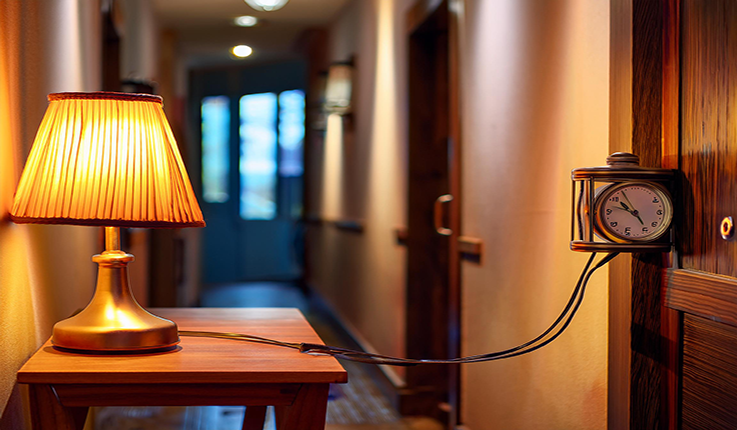17 February 2025
The Evolution of Automated Lighting
The evolution of automated lighting has seen a significant shift from basic time-based controls to sophisticated systems that mimic natural light patterns. Initially, lighting automation was simple and based primarily on time, but today, it incorporates advanced technologies that adjust lighting in response to occupancy, daylight levels, and even the changing color temperature of natural light throughout the day.

Timeclocks
The earliest form of lighting automation involved timeclocks, which allowed lights to be turned on or off at predetermined times. For example, a system could be set to turn lights on at sunset or off at midnight. While this offered convenience and energy savings compared to manual operation, the system lacked any flexibility to respond to real-time changes in the environment.
Occupancy and Vacancy Sensors
As technology advanced, occupancy and vacancy sensors were introduced. These systems detect motion within a space and adjust the lighting accordingly—turning lights on when someone enters a room and off when the room is empty. This improved energy efficiency and enhanced user experience by ensuring lighting was available only when needed, without relying on fixed schedules.
Daylighting
Building upon motion-sensing technologies, daylighting automation takes into account the amount of natural light entering a space. Sensors measure the light levels in the room and adjust artificial lighting to maintain consistent illumination, depending on the availability of natural sunlight. Automated shades can also be integrated to minimize glare from direct sunlight, optimizing both comfort and energy efficiency by reducing reliance on electric lighting during daylight hours.
Daylight Mimicry
The most recent advancement in automated lighting is daylight mimicry, which goes a step further by adjusting the color temperature of artificial light throughout the day to align with natural sunlight patterns. This system gradually shifts the lighting from a cooler, bluish hue in the morning to a warmer, reddish tone in the evening, simulating the natural progression of sunlight. This helps maintain circadian rhythms, enhancing both comfort and well-being, and supports productivity, particularly in environments like offices or healthcare settings.
Conclusion
From the simplicity of timeclocks to the sophisticated systems of daylight mimicry, automated lighting has become more dynamic and user-centric. Today’s systems don’t just turn lights on or off—they respond to occupancy, adjust to natural light, and even simulate the natural color changes of daylight, all with the goal of creating more comfortable, energy-efficient spaces. These advancements reflect a broader trend in building technology, where automation aims to enhance both functionality and user experience.
Do you have a project? Not sure what you need?
We are here to help, Contact Us for more information or to create your own indicative quotation why not try our System Builder Tool.
